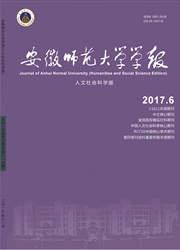

 中文摘要:
中文摘要:
清代清水江流域,贞节观念开始普遍流行,存在着大量的寡居妇女。其守寡的开始年龄多集中在15—30岁之间,这与明清王朝“凡民间寡妇,三十以前夫亡守志,五十以后不改节者,旌表门闾,除免本家差役”的政策相一致。但也有例外,30岁以上守节而受旌表的事例也不少见。并且出现了“一门两寡”、甚至“一门三寡”的现象。在日常生活中,寡妇们孤灯冷泪,但又矢志抚孤、事奉翁姑,极力地维系着整个家庭在社会中的延续。她们也通过从事女红、纺织、耕种、佣工和典卖家产等方式获取经济收入,以保证其家庭最基本的生存需求。
 英文摘要:
英文摘要:
With the prevalence of chastity, there were many widowed women aged from 15 to 30 in the Qingshuijiang River valley during the Qing Dynasty. The situation was consistent with national policy of the Ming and Qing Dynasties : if a woman younger than 30 years old became a widow and she did not ignore her chastity until the age of 50 years old, her family could be publicly honored and free of services to the courts or army. But there were many cases in which some older-than-30 widows were publicly honored for their chastity. In such a social context, the phenomenon of two widows in one family or even three widows in one family came into being. In their sad daily life, these widows had to take care of the ole and the young so as to maintain the continued growth of the family in the society. They tried to meet the survival needs of the family through various ways, such as needlework, spinning, farming , working as servants or even pawning the properties of the families.
 同期刊论文项目
同期刊论文项目
 同项目期刊论文
同项目期刊论文
 期刊信息
期刊信息
